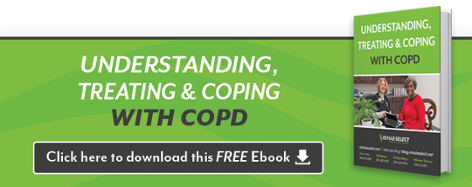 Since there is no cure for chronic pulmonary obstructive disease (COPD), learning to live with and manage the condition is vital. Physicians will recommend pulmonary rehabilitation as part of a comprehensive treatment plan, but ultimately, it is the lifestyle changes that may have the greatest impact. Those affected with this condition find that what they do at home makes them feel better, and according to the Mayo Clinic, slows lung damage at the same time.
Since there is no cure for chronic pulmonary obstructive disease (COPD), learning to live with and manage the condition is vital. Physicians will recommend pulmonary rehabilitation as part of a comprehensive treatment plan, but ultimately, it is the lifestyle changes that may have the greatest impact. Those affected with this condition find that what they do at home makes them feel better, and according to the Mayo Clinic, slows lung damage at the same time.
Don’t Smoke
When it comes to lifestyle changes, this is the biggest. Smoking causes further damage and will only exacerbate pulmonary conditions. The Centers for Disease Control and Prevention reports that of the 15 million Americans with COPD, 39 percent continue to smoke cigarettes. Smoking is directly responsible for nine out of 10 COPD-related deaths. The best way to slow the progression of the illness is to stop smoking.
It is just as important for a pulmonary patient to avoid secondhand smoke and other types of air pollution. Smoke from any source is an irritant that will further damage the lungs.
Employ Breathing Techniques
Patients with pulmonary conditions can use breathing techniques to improve oxygen flow throughout the body. With better oxygenation comes more energy. Training includes exercises that teach more effective ways to breathe, such as pursed-lip breathing, diaphragmatic breathing and controlled coughs.
Pursed-lip breathing exercise:
- Sit upright in a straight-back chair with arms and shoulders relaxed.
- Inhale through the nose for two seconds.
- Exhale through pursed lips for four seconds.
Diaphragmatic breathing exercise:
- Lie on the floor with knees bent.
- Place one hand on the stomach, above the waist.
- Inhale through the nose while pushing out the stomach.
- Exhale through pursed lips and feel the hand return to the starting position.
Controlled coughs
Controlled coughing is an extension of diaphragmatic breathing meant to clear the airway:
- Sit up in a comfortable chair, allowing the head to lean forward slightly.
- Inhale through the nose until the stomach extends.
- Hold the breath for three seconds, then cough once as the hand resting on the abdomen pushes in and up.
Do this several times to clear mucus when necessary.
Regular Exercise
It is a challenge for people with COPD to exercise regularly, but it is essential to strengthen the body and build endurance. Start slowly and work up to at least 20 minutes of cardiovascular exercise, three or four times a week. This could include:
- Walking
- Stationary biking
- Rowing
Combining strength training and aerobics provides a comprehensive workout program.
Healthy Eating
Weight management is important for those living with pulmonary conditions. In some cases, patients can become underweight as their body fights the illness. A doctor may suggest a special diet and supplemental nutrition to increase body weight. Overweight people are encouraged to drop pounds because being overweight makes breathing more difficult.
A healthy diet should include plenty of protein for healing and to protect the body from damage. Loss of protein inhibits the lungs’ ability to defend against infection. Healthy protein sources include:
- Lean meat
- Eggs
- Fish
- Legumes
- Low-fat or no-fat dairy
Drink plenty of water
Drinking plenty of water helps to thin mucus and keeps the airways clear. Fluid intake should be 8 to 12 cups of caffeine-free liquids a day. The doctor may also suggest setting up a humidifier at home to help keep airways moist and open. This is especially important for those patients having a difficult time clearing mucus out of the bronchial tubes.
People with COPD need to see a doctor regularly, even when they feel fine. Monitoring lung function is a significant part of managing the illness. Combined with drug therapy and flu vaccinations, lifestyle changes improve the quality of life for anyone living with pulmonary conditions.





